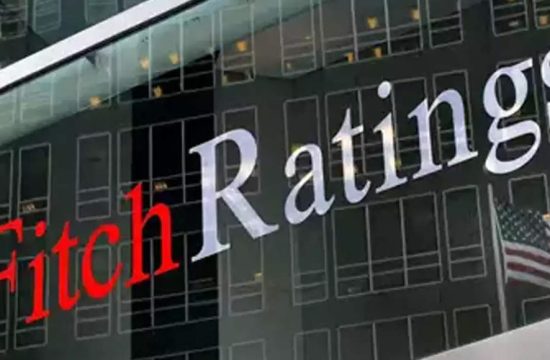
The 2020 presidential election could be a make it or break it moment for Social Security.
The reason: Social Security’s funding, already on the verge of running out, could reach that threshold sooner, thanks to the economic damage brought on by Covid-19.
While some benefits will still be payable when that happens, talks on Capitol Hill have increasingly turned to how to restore the program’s solvency.
That means the next president could have the opportunity to help shape the program’s future in the next four years.
Democratic presidential nominee Joe Biden has emerged with a plan of his own. Broadly, it would boost benefits for low-income households while raising taxes on high earners.
How Biden wants to change Social Security
Biden would increase the special minimum benefit, which was created to provide low-earners with adequate benefits. Biden calls for setting that figure at 125% of the federal poverty line. That would bring it to $ 1,301 from $ 886 a month as of 2019, according to an analysis by the Penn Wharton Budget Model at the University of Pennsylvania.
Biden’s plan also calls for making survivor benefits more generous by increasing them about 20% more per month. Today, surviving spouses can see up to a 50% cut to their monthly checks when their partner passes away.
It also includes more generous checks for beneficiaries who live a long time. Increases totaling 5% of an individual’s primary insurance amount, or the benefit they receive at full retirement age, would be phased in at 1% per year from years 16 to 20 of claiming.
To pay for it, Biden’s plan also calls for applying payroll taxes on wages of $ 400,000 and above. Currently, workers and employers each pay 6.2% toward Social Security, but that is capped at wages of $ 137,700 as of 2020. (Employers and employees also each pay 1.45% toward Medicare.)
How the changes could affect lifetime spending
The benefit increases and higher taxes will have consequences when it comes to how much people are able to spend in their lifetimes, according to Larry Kotlikoff, a professor of economics at Boston University and founder of Economic Security Planning, a provider of financial planning tools.
Benefit increases for those who live long lives would benefit low income earners the most, based on scenarios run on his company’s MaxiFi Planner tool, which calculates how much more one can “spend” based on a variety of inputs such as retirement date, earnings history and more.
The reason for that is the 5% benefit increase is based on the average wage, and those at the bottom earned less than that rate.
How lifetime discretionary income could change under Biden’s Social Security plan
| Income | Current discretionary spending | New discretionary spending – taxed | Increase ($ ) | Increase (%) | New discretionary spending � Untaxed | Increase ($ ) | Increase (%) |
|---|---|---|---|---|---|---|---|
| 50% Average Wage Index* ($ 26,073) | $ 521,727 | $ 549,570 | $ 27,843 | 5.34% | $ 549,570 | $ 27,843 | 5.34% |
| 100% AWI ($ 52,146) | $ 951,964 | $ 979,828 | $ 27,864 | 2.93% | $ 979,828 | $ 27,864 | 2.93% |
| 200% AWI ($ 104,292) | $ 1,365,497 | $ 1,388,609 | $ 23,112 | 1.69% | 1,394,079 | $ 28,582 | 2.09% |
| 300% AWI ($ 156,438) | $ 1,517,388 | $ 1,540,235 | $ 22,847 | 1.51% | $ 1,546,208 | $ 28,820 | 1.90% |
“For somebody who is a low earner, like earning half the average, it’s like a 10% benefit increase,” Kotlikoff said.
Someone earning half of a benchmark known as the Average Wage Index would get the biggest boost in their ability to spend, according to Kotlikoff’s calculations. Those people would be earning about $ 26,073 per year, based on the latest numbers from the Social Security Administration. With the benefit increase, their ability to spend would go up by 5.34%.
“Their living standard gets to go up every year by 5.34%. They could spend 5.34% more every year,” Kotlikoff said. “Economics doesn’t say wait until you’re 78 to start spending the money … You can spend more now.”
Those who earn exactly the full average wage in the index, or $ 52,146 per year, would get a 2.93% increase in their ability to spend. That would be further reduced for those with incomes above that level, who unlike lower earners, would have their Social Security benefits taxed.
How payroll taxes on wages over $ 400,000 could impact lifetime discretionary spending
| Income (per year) | Current discretionary spending (lifetime) | New discretionary spending (lifetime) | Decrease (lifetime) |
|---|---|---|---|
| $ 500,000.00 | $ 7,400,192.00 | $ 7,181,199.00 | $ 218,993.00 |
| $ 1,000,000.00 | $ 12,463,677.00 | $ 11,150,404.00 | $ 1,313,273.00 |
| $ 2,000,000.00 | $ 22,676,433.00 | $ 19,161,805.00 | $ 3,514,628.00 |
| $ 5,000,000.00 | $ 53,285,816.00 | $ 43,211,152.00 | $ 10,074,664.00 |
Due to the payroll tax increases for those earning $ 400,000 and above, the highest earners would see a larger loss of spending power.
In another example based on the MaxiFi Planner’s calculations, someone who earns $ 5 million per year could see a loss of about $ 10.1 million in their spending from ages 45 to 65.
That’s based on the full 12.4% payroll tax. While 6.2% of that would come directly from workers’ paychecks, employees would also bear the cost of the levies paid by the employer through reduced pay.
“We definitely need to have higher taxes. It seems fair to ask the rich to pay more, but it is a good size hit,” Kotlikoff said. “It’s going to cut the super high earner’s spending by about 20%. It’s a bigger deal than people might think.”
Biden versus Trump on reform
In contrast to Biden’s proposal, President Donald Trump has implemented a temporary payroll tax deferral, which will allow employers and employees to delay paying Social Security payroll taxes through the end of the year.
They will, however, have to make up for those lost payments under the current terms of the executive order signed by the president. Trump has said that he plans to forgive those catch-up tax payments from the deferral period if he is re-elected.
The country is already facing a $ 53 trillion gap in Social Security, according to the latest trustees’ report released earlier this year. That estimate does not measure the effects of the Covid-19 pandemic.
“Cutting taxes when you’re so broke doesn’t make sense,” Kotlikoff said.
When it comes to whether Biden or Trump have the better approach to fix Social Security, Kotlikoff, who previously ran for president, said he prefers neither candidate.
Because both candidates are focusing on the 75-year fiscal gap, they are not addressing the full problem, he said.
“Given the way we do our accounting, it will look like we’re not at a crunch time until we are some years down the road,” Kotlikoff said. “We are actually in a crunch time today.”





